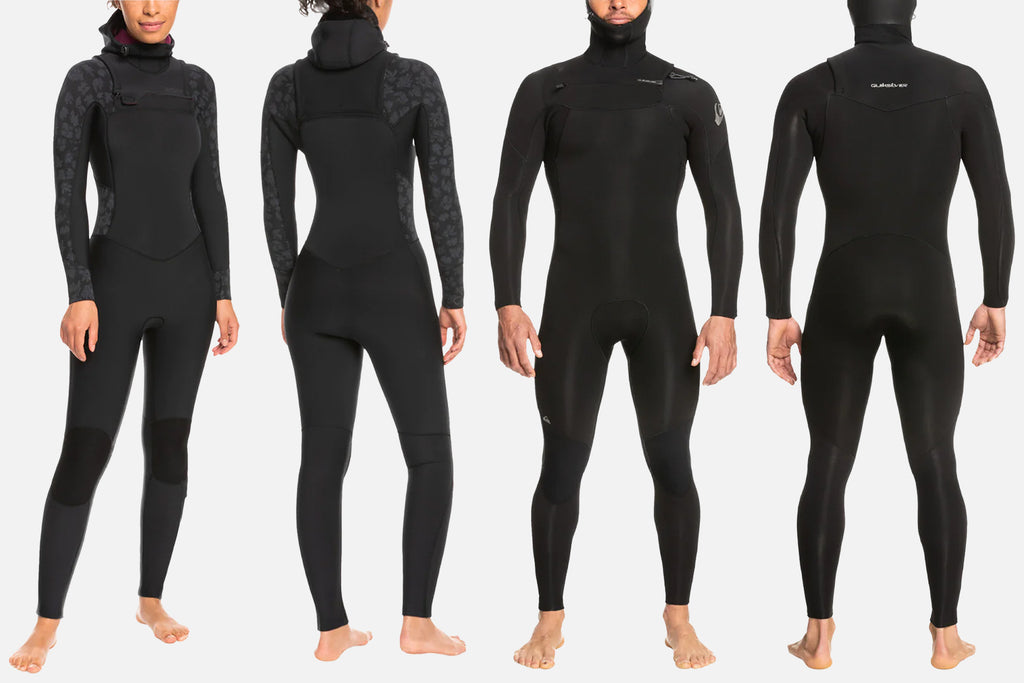If there is one thing you want to get right when selecting a wetsuit, it is the fit. Wetsuit sizing can vary from brand to brand, so referencing the size chart for the brand you are looking at will be a good starting point, but it doesn’t end there.
Check out our Women’s Wetsuit Fit Guide and Best Wetsuits for Plus Sized Women for some great women’s specific size advice.

How to Read a Wetsuit Size Chart
Determining your wetsuit size based on a size chart can be tricky. The two most important factors to consider are height and weight. Besides height and weight, chest measurement is another important thing to consider. If you are over the chest measurement, you might have a really hard time getting into the wetsuit, or it will feel very constricting in the arms, which will not be ideal for paddling. Sometimes, you can be outside of the measurements, and the suit will still fit, but if you can find a suit where you fall within the measurements, that will most likely be the correct size for you.

How Should a Wetsuit Fit?
In general, a wetsuit should fit snugly, like a second skin, but not so tight that your range of motion is limited. The sleeves should fall at the wrist bone and the legs just above the ankle bone, and there should be no gaps, pockets, or rolls of neoprene. It is important to understand that a wetsuit, after it gets wet, will soften up and feel more comfortable, and after a few sessions, it will start to take your shape and fit even better. It is normal to have a fold of neoprene underneath the armpit; this is a ragland gusset. Since 90% of surfing is paddling, designers incorporate the gusset to prevent fatigue and increase the range of motion.

What Happens When You Have a Poorly-Fitted Wetsuit?
If the suit is too tight, you will be warm, but your movement will be restricted, and you will not be as comfortable as you should be. This could result in skin irritation around the seams. Also, a suit that is too tight will put a lot of stress on the wetsuit, causing the neoprene to thin out and the seams to leak and break down faster. If the suit is too big, it might be easy to get into, but in the water, it’s not going to function properly. All the gaps and extra material will hold more water and allow more water into the suit, making your body work much harder to stay warm.
What If I Am In Between Sizes?
If you are in between sizes, the best thing to do is try on both sizes. Or, if you are ordering online, you can consult a wetsuit expert. Generally, height and weight are the most important measurements; however, getting specific measurements for your waist and chest will help narrow it down when you are in between sizes. Other factors to consider are weight fluctuations and your personal preference for how snug you want it to fit. A tighter wetsuit will be hard to get in and out of, especially if you aren’t very flexible in the upper body or you have bad shoulders.
How does wetsuit fit affect flexibility?
How does wetsuit fit affect durability?
If a wetsuit is too snug, you will wear it out sooner. Technically, you could get into a wetsuit two sizes too small but it would break down at the seams pretty quickly due to the extra stress.
How does wetsuit fit affect warmth?
One of the worst things that can happen while surfing is getting flushed with water. If your wetsuit fits properly, you will have very minimal flushing. A loose wetsuit will allow water in at the ankles, wrist, and around your neck, which could easily make you cold and force you to end your session early.
